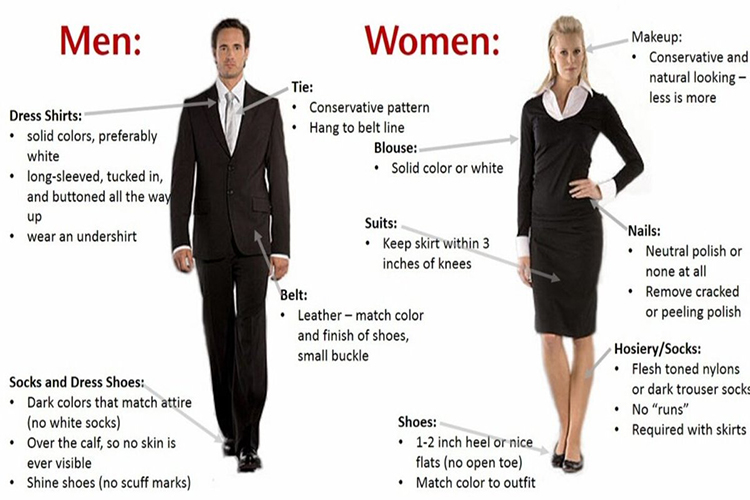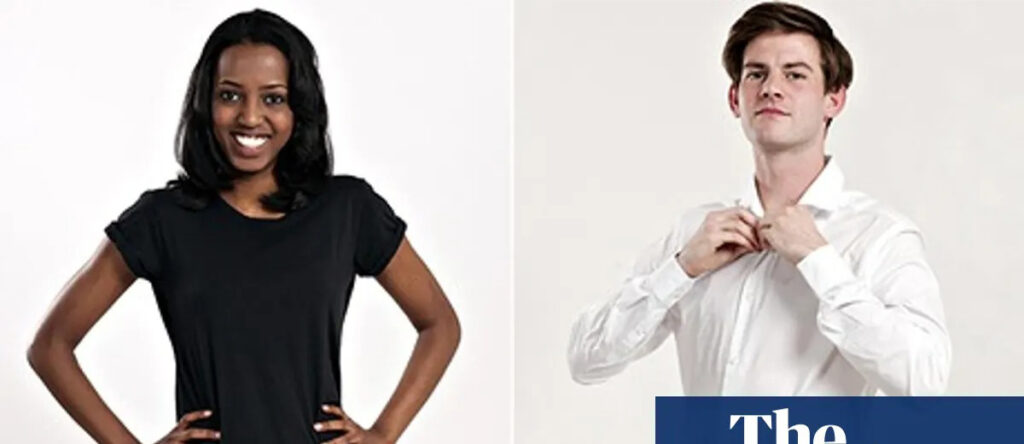Well it’s true; Regardless of your accomplishments, the way you dress will make an impression at your interview. Aware of the seriousness of the situation, today we are going to show you how to dress for a job interview. Always remember that awkward dressing should be out of the question at all. If it is your dream job that you are being interviewed for, you must look neat and well-groomed. Your interviewer should be able to see that you are really passionate about your work. There are many do’s and don’ts about dressing smartly for an interview. But you don’t need to worry about that because we’ve covered it all below. So read the article.
1. Climbing the career ladder
Are you a debutant in the big corporate world? Or do you climb the ladder? In any case, you should already know that company and customer positions are all about communication, friendliness and your specialist knowledge. It’s also about the way you present yourself. Paola Farina, Personal Stylist, suggests: “First impressions are the most important and are formed through clothing and non-verbal communication. Appropriately “dressed appearance” (the right clothes for the job, but also the right clothes for us) boosts our self-esteem and makes us feel more confident and appropriate for the position.” And that’s why, in the end, your clothes say a lot about you, even before you actually say anything. Lead with an overall well-groomed and tidy appearance – that alone conveys an awareness of yourself and your environment. Then follow the small details that we pointed out below.
Profile Examples – Media, Advertising, Sales, Business Development, Aviation Industry, Consulting, etc.
what you should know
Dress as this is as formal as can be.
You can follow the latest trends and experiment with the shirt (top) you wear indoors, but stick with it.
Opt for darker colors for suits, jackets, blazers, trousers and skirts and lighter colors for shirts, tops and blouses. Make sure they are tight and snug.
Makeup and accessories should be minimal; Sandals should be closed – preferably anything under 3-4 inches.
Pencil skirts or one-piece dresses are other exciting options. However, pay attention to the length. The correct length is knee length or just below the knee.
Cigarette and ankle length pants are other options that will keep you stylish and on point.

2. Her big step in the fashion industry
The biggest myth surrounding fashion jobs is that you’re expected to show up in fancy, over the top, and quirky clothes just because you’re in the industry. It doesn’t work that way, and it’s not expected of you when you go to the interview. Everyone has their own style, so just stick with it and let it be who you are. Show them what you can contribute without saying anything. Yes, by all means stay stylish and fashionable but don’t pretend and try to blend in somewhere you don’t belong. Avoid wearing a tie if you don’t know how to tie a tie just because you think it will make you look smart in a job interview.
Farina adds: “Clothes that don’t belong to us make us look like idiots. Our posture and the way we walk looks strange and we don’t feel safe. My advice is: find your style as a signature and don’t try to be someone else just to impress.” Your dress has nothing to do with your creativity or talent in the chosen field.
Profile Examples – Design Assistant, Designer, Stylist, Personal Shopper, Fashion Writer or Editor, etc.
what you should know
Your dress should be specific to the industry you are aiming for. Keep the brand’s aesthetic in mind, but don’t overdo it.
Keep all your clothes understated, stylish and elegant.
Leave her with a sense of intrigue. Wearing branded labels might not always be as cool as you think. Farina advises, “Especially when interviewing for a job for a specific brand, I strongly recommend not wearing clothing that belongs to a competitor.”
Let details like your accessories, scarves, bags, shoes and fine jewelry draw attention.
And since this is an interview, everything should definitely be straightforward and formal.
3. Interested in a finance job or investment banker?
An industry that is not readily permeable. You need to be badass, tough and smart but polite and to the point. So it’s a double-edged knife, so your personality is key. You should work on that. That’s why it’s crucial to make an impression at an interview, and a good one at that. You know what they say: fashion changes, but style stays the same. This industry is a clear sign of that. So don’t experiment too much and stay safe.
Profile Examples – Investment Banker, Banker, Portfolio Manager, Relationship Manager, Financial Advisor, Advisor, etc.
what you should know
Stick to your regular black, gray, or blue suits. Choose what you like, but still choose a suit.
This shouldn’t be too difficult because you look at every job profile – everyone is at their best in this industry.
Some companies are okay with small printed dresses and suits, but these can wait until you get the job.
That doesn’t mean you have to wear the same old-school interview pants. Wear the latest in office wear, but again, it has to be professional. I can’t stress this enough.

4. Crack the creative role
It’s one of the most progressive industries and you are judged differently here than in the mainstream industries. Creativity reigns supreme here, but you are expected to come in neat and presentable attire for interviews. It shouldn’t be edgy or sloppy. Keep these things in mind!
Profile examples – writer, director, photographer, art or creative director, editor, etc.
what you should know
Jeans, corduroy, and other semi-formal pants are acceptable, but let them be dark and unripened.
Wear a silk/chiffon/georgette shirt or top. Put it in if you can.
Pair them with accessories but keep them minimalist.
One-piece dresses are good, but not too short. That’s never acceptable for an interview.
The company, brand, or manufacturing house you’re interviewing for might be pretty laid back, but it’s important to be presentable and formal when interviewing.
5. The next big thing - startups
One of the perks of working in a startup is that you don’t have to worry too much about the dress code. And most of them are pretty laid back with whatever you wear. One less (big) thing to worry about. They all, including the founder, mostly graduated straight from college, or at least it feels like it. So you can’t be overly formal or informal. Find the right balance between elegant, casual and formal.
Profile Examples – Programmer, Developer, Coding, Application Development, Web Designer, Analyst, etc.
what you should know
Visit their website for an overview.
Semi-formal or smart-casual attire usually works.
As long as the dress isn’t too short or too revealing, you’re good to go.
In summary, interview dress is a crucial aspect of making a positive first impression on potential employers. By following the “dos and don’ts” you can ensure that your appearance is consistent with the company culture and the position you are applying for.
Remember to dress professionally, with well-fitting and appropriate clothing, paying attention to details such as accessories and personal grooming. The goal is to present yourself as confident, capable and passionate about the job, regardless of the industry or position you are applying for.

